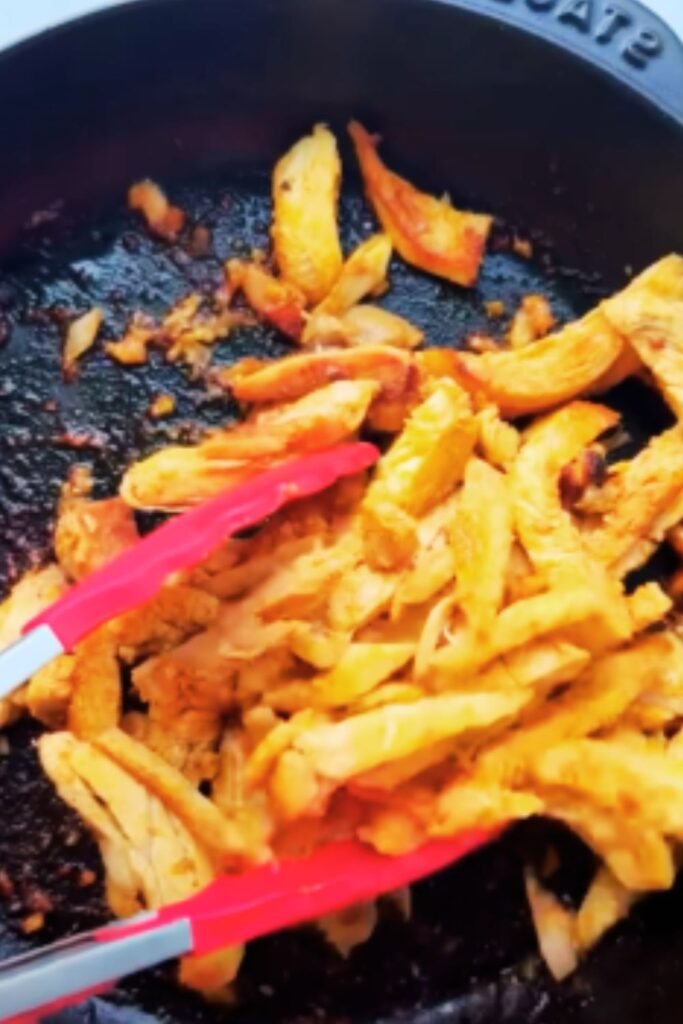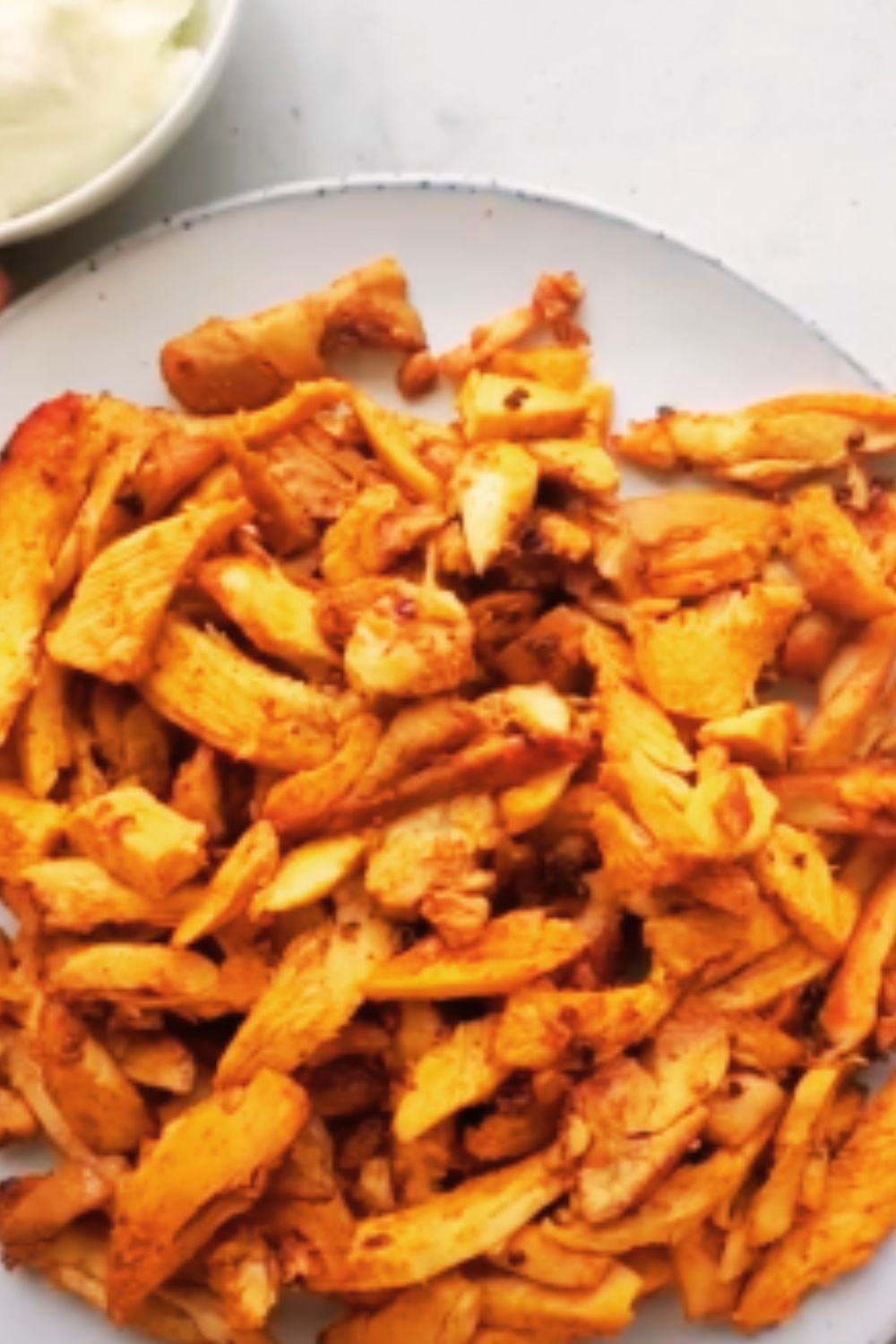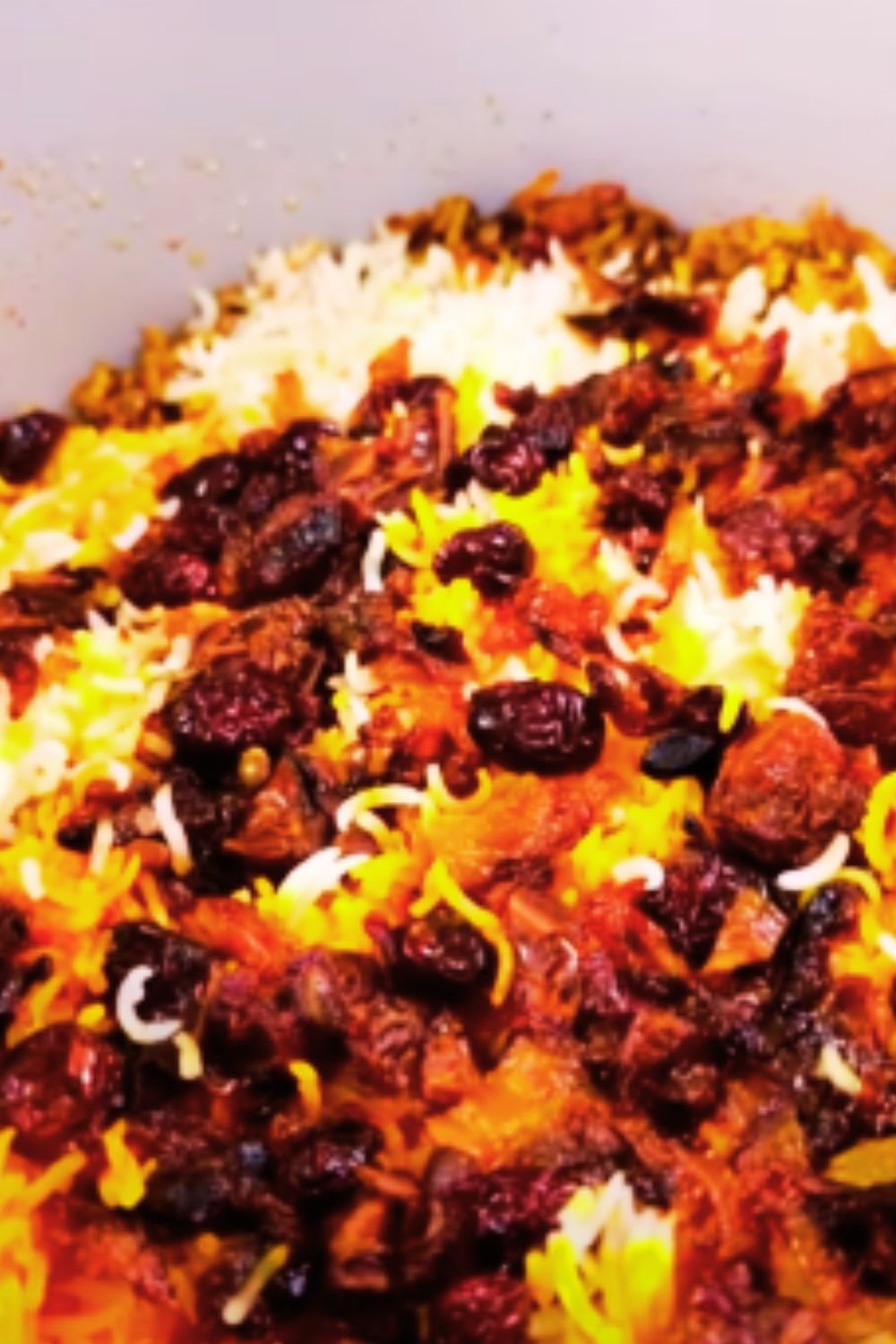There’s something almost magical about the sizzle and aroma of chicken shawarma cooking on a vertical rotisserie. The first time I encountered this Middle Eastern delicacy on a bustling street in Lebanon, I was immediately captivated. The tender, spiced meat wrapped in warm flatbread with creamy sauces and fresh vegetables isn’t just food—it’s an experience that combines centuries of culinary tradition with practical street food brilliance.
As someone who’s spent years perfecting the art of recreating authentic shawarma at home, I’m excited to share everything I’ve learned. While traditional shawarma requires a vertical rotisserie, I’ve discovered techniques that capture the essence of this dish using standard home kitchen equipment.
In this comprehensive guide, I’ll walk you through the history, key ingredients, preparation techniques, and serving suggestions that will help you create restaurant-quality chicken shawarma in your own kitchen. Whether you’re a shawarma enthusiast looking to perfect your technique or a curious foodie trying it for the first time, this article has everything you need to know.
The Rich History of Shawarma
Shawarma’s origins stretch back to the Ottoman Empire in the 18th century, where the dish we now know as doner kebab was first created. The cooking method—slowly roasting seasoned meat on a vertical rotisserie—spread throughout the Middle East, evolving into regional variations.
The term “shawarma” comes from the Turkish word “çevirme,” which means “turning”—a reference to the rotisserie cooking method. What began as lamb or mutton eventually expanded to include chicken, beef, and turkey variations as the dish spread across Lebanon, Syria, Jordan, Palestine, and beyond.
What separates shawarma from similar dishes like Greek gyros or Turkish doner kebab are the specific spice blends used to marinate the meat. The chicken version, which we’re focusing on today, has become particularly popular worldwide for its accessibility and lighter flavor profile.
Essential Spices: The Soul of Chicken Shawarma
The distinctive flavor of chicken shawarma comes from its complex blend of spices. While recipes vary by region and family tradition, certain core spices form the foundation of authentic shawarma:
- Cumin: Earthy and warm, providing the base note
- Coriander: Adds a citrusy, slightly sweet element
- Cardamom: Offers an aromatic, slightly sweet and floral quality
- Turmeric: Contributes a golden color and subtle earthy flavor
- Cinnamon: Brings warmth and sweetness
- Paprika: Adds color and mild pepper flavor
- Allspice: Combines notes of cinnamon, nutmeg, and cloves
- Sumac: Provides a tangy, lemony brightness (optional but authentic)
The beauty of shawarma lies in balancing these spices—no single flavor should dominate. The marinade also typically includes garlic, lemon juice, olive oil, and yogurt, which tenderize the meat while infusing it with flavor.
Shawarma Spice Blend Variations by Region
| Region | Dominant Spices | Distinctive Elements | Marinade Base |
|---|---|---|---|
| Lebanese | Cardamom, Cinnamon, Nutmeg | Higher proportion of warm spices, often includes bay leaf | Yogurt and lemon juice |
| Syrian | Cumin, Coriander, Paprika | More earthy profile, often includes black pepper | Olive oil and vinegar |
| Jordanian | Sumac, Allspice, Turmeric | Tangier profile with bright yellow color | Tomato paste and olive oil |
| Palestinian | Sumac, Za’atar, Cardamom | Herb-forward with sesame notes from za’atar | Tahini and lemon juice |
| Turkish Influence | Oregano, Thyme, Red Pepper | More herb-focused with heat | Yogurt and olive oil |
| Westernized | Cumin, Paprika, Garlic Powder | Simplified spice profile, often pre-mixed | Oil-based only |
The Perfect Chicken for Shawarma
The traditional meat for shawarma is chicken thighs, not breast meat. There are several crucial reasons for this:
- Fat content: Thighs have higher fat content, which keeps the meat moist during the lengthy cooking process
- Flavor absorption: Dark meat absorbs marinades more effectively
- Texture: Thighs remain tender even after extended cooking
- Authentic result: Most traditional shawarma uses thigh meat for its superior flavor
I always recommend boneless, skinless chicken thighs for home preparation. They provide the perfect balance of convenience and authenticity. If you absolutely must use breast meat, consider adding extra olive oil to your marinade and being very careful not to overcook the meat.
The Art of Shawarma Marinade
A proper shawarma marinade serves multiple purposes:
- Tenderizes the meat
- Infuses deep flavor
- Creates a protective coating during cooking
- Develops authentic color and aroma
My tested and perfected chicken shawarma marinade combines:
- 3 tablespoons olive oil
- 2 tablespoons plain yogurt
- 4 cloves minced garlic
- 2 tablespoons lemon juice
- 1 tablespoon white vinegar
- 2 tablespoons shawarma spice blend
- 1 teaspoon salt
- ½ teaspoon black pepper
For best results, marinate your chicken for at least 4 hours, but preferably overnight. The yogurt contains enzymes that gently break down proteins, resulting in exceptionally tender meat. The acid from lemon juice and vinegar further tenderizes while brightening the flavor profile.
Cooking Methods: From Traditional to Practical
While authentic shawarma requires a vertical rotisserie (known as a spit), I’ve experimented with several home methods that deliver remarkable results:
Oven-Baked Method
This approach produces excellent flavor development and caramelization:
- Preheat your oven to 425°F (220°C)
- Arrange marinated chicken pieces on a baking sheet, ensuring they’re not overcrowded
- Bake for 30-35 minutes, turning halfway through
- For extra authenticity, finish under the broiler for 2-3 minutes to create charred edges
Stovetop Skillet Method
This quicker alternative still delivers great flavor:
- Heat a cast-iron skillet over medium-high heat
- Add a tablespoon of oil
- Cook chicken pieces in batches to avoid overcrowding (this prevents steaming)
- Cook 4-5 minutes per side until caramelized and cooked through
- Let rest before slicing thinly against the grain
Grill Method
My personal favorite for authentic flavor:
- Preheat grill to medium-high heat
- Thread marinated chicken onto metal skewers
- Grill for 6-8 minutes per side, rotating for even cooking
- Rest for 5 minutes before slicing

The Vertical Stack Hack
For the most authentic results without specialized equipment:
- Thread marinated chicken pieces tightly onto a vertical skewer
- Stand the skewer upright in a deep roasting pan
- Roast at 350°F (175°C) for 1-1.5 hours, occasionally shaving off the outer layer as it cooks
- This mimics the traditional cooking process where only the outer layer cooks at once
The Crucial Slicing Technique
A frequently overlooked aspect of authentic shawarma is how the meat is sliced. Traditional shawarma is shaved in thin strips from the outside of the rotating meat cone. To replicate this at home:
- Allow the cooked chicken to rest for 5-10 minutes
- Slice against the grain as thinly as possible
- If desired, briefly return the sliced meat to a hot pan with a drizzle of the marinade to create crispy edges
The thin slicing is essential for proper texture and ensures each bite contains maximum surface area coated with those wonderful spices.
Building the Perfect Shawarma Wrap
Authentic shawarma is about more than just the meat—it’s a harmonious combination of flavors and textures. Here’s how to build the perfect wrap:
- The Bread: Traditional shawarma uses thin, unleavened flatbread like markook or saj. Readily available substitutes include:
- Thin pita bread
- Lavash
- Flour tortillas (not authentic but practical)
- The Sauces: These provide crucial moisture and flavor contrast:
- Toum (Lebanese garlic sauce) – intensely garlicky and creamy
- Tahini sauce – nutty and rich
- Yogurt sauce with cucumber and mint – cooling and refreshing
- The Vegetables: These add freshness and texture:
- Thinly sliced tomatoes
- Cucumber
- Pickled turnips (classic pink pickles)
- Pickled vegetables
- Shredded lettuce or cabbage
- Sumac-dusted onions
- The Assembly: Proper assembly ensures a balanced bite every time:
- Warm the bread slightly to make it pliable
- Spread a generous layer of sauce
- Add a modest amount of sliced chicken (don’t overstuff!)
- Add vegetables in thin layers
- Drizzle with additional sauce
- Roll tightly, tucking in the ends if desired
- Wrap in foil and let sit for 2-3 minutes to allow flavors to meld

Homemade Shawarma Accompaniments
Classic Toum (Garlic Sauce)
This intensely garlicky, cloud-like sauce is a shawarma essential:
- 1 cup peeled garlic cloves
- 1 teaspoon salt
- 4 cups neutral oil (like canola)
- ¼ cup lemon juice
Process garlic and salt in a food processor until pureed. With the processor running, very slowly drizzle in oil in a thin stream, alternating occasionally with small amounts of lemon juice. The emulsification process should result in a fluffy, white sauce with the consistency of mayonnaise.
Tahini Sauce
This nutty, slightly tangy sauce provides rich contrast:
- ½ cup tahini paste
- ¼ cup lemon juice
- 2-3 tablespoons water
- 2 cloves minced garlic
- ¼ teaspoon salt
Whisk together tahini and lemon juice (it will seize initially), then gradually add water until smooth and pourable. Add garlic and salt to taste.
Pickled Turnips
These vibrant pink pickles provide a tangy crunch:
- 2 pounds turnips, peeled and cut into batons
- 1 small beet for color
- 4 cups water
- ½ cup white vinegar
- 3 tablespoons salt
- 3 cloves garlic, sliced
- 1 bay leaf
Combine water, vinegar, and salt in a pot and bring to a boil. Place turnips, beet, garlic, and bay leaf in a clean jar. Pour hot brine over vegetables, ensuring they’re completely submerged. Seal and refrigerate for at least 5 days before eating.
Nutritional Profile of Chicken Shawarma
One of shawarma’s advantages is its relatively balanced nutritional profile:
| Component | Amount (per serving) | % Daily Value | Notes |
|---|---|---|---|
| Calories | 450-550 | 22-27% | Varies based on sauces and bread |
| Protein | 30-35g | 60-70% | Primarily from chicken |
| Carbohydrates | 40-45g | 13-15% | Mostly from bread and vegetables |
| Fat | 20-25g | 30-38% | Healthy fats from olive oil and tahini |
| Fiber | 4-6g | 14-21% | From vegetables and whole grain bread |
| Sodium | 800-1000mg | 35-43% | Can be reduced with low-sodium preparation |
| Iron | 3.5mg | 19% | From dark meat chicken and tahini |
| Calcium | 120mg | 12% | Primarily from tahini and yogurt sauces |
| Vitamin C | 15mg | 20% | From fresh vegetables and lemon juice |
| Vitamin A | 1500IU | 30% | From vegetables and spices |
Shawarma can be made healthier by:
- Using whole grain flatbread
- Increasing the vegetable-to-meat ratio
- Moderating sauce portions
- Controlling sodium by reducing salt in marinades
Serving Suggestions: Beyond the Wrap
While the wrapped format is most familiar, shawarma is remarkably versatile:
Shawarma Plate
A deconstructed approach that’s lower in carbohydrates:
- Sliced shawarma chicken arranged on a plate
- Small bowl of hummus
- Small bowl of tabouleh
- Pickled vegetables
- Sliced cucumbers and tomatoes
- Warm flatbread on the side
- Drizzle of tahini sauce
Shawarma Bowl
A modern, convenient variation:
- Bed of rice, bulgur, or freekeh
- Sliced shawarma chicken
- Diced cucumber, tomato, and onion
- Pickled vegetables
- Drizzle of sauce
- Sprinkle of fresh herbs
Shawarma Salad
A lighter option that still delivers authentic flavor:
- Mixed greens or chopped romaine
- Sliced shawarma chicken
- Diced vegetables
- Chickpeas
- Lemon-tahini dressing
- Toasted pine nuts

Make-Ahead and Storage Tips
Shawarma components work beautifully for meal prep:
- Marinated chicken: Can be frozen raw in marinade for up to 3 months
- Cooked chicken: Refrigerates well for 3-4 days
- Sauces: Most keep for 1-2 weeks refrigerated
- Assembled wraps: Best eaten immediately but can be wrapped tightly in foil and refrigerated for up to 24 hours
For best results when reheating:
- Bring refrigerated chicken to room temperature
- Reheat in a hot skillet with a splash of water to restore moisture
- Avoid microwave reheating which can toughen the meat
Common Mistakes to Avoid
Through years of making shawarma, I’ve identified these common pitfalls:
- Using breast meat without adjusting: If using breast meat, reduce cooking time and temperature
- Insufficient marination time: The minimum is 4 hours, but overnight is ideal
- Overcrowding the pan: This causes steaming instead of caramelization
- Thick slicing: Always slice the meat as thinly as possible
- Overstuffing wraps: Balance is key—too much filling makes wraps fall apart
- Skipping the resting period: Always let meat rest before slicing
- Too much sauce: This makes wraps soggy and messy
- Underestimating spice quantities: Authentic shawarma has bold, assertive seasoning
Regional Variations Worth Exploring
Shawarma varies across the Middle East, with each region adding its own character:
- Lebanese style: Heavy on garlic and warm spices like cinnamon and nutmeg
- Syrian approach: More earthy with cumin and coriander, often includes pomegranate molasses
- Jordanian version: Uses more sumac for tanginess
- Israeli interpretation: Often includes turmeric and is served with tahini and amba (pickled mango sauce)
- Turkish influence: Incorporates oregano and thyme with less complexity in the spice blend
Q&A: Your Shawarma Questions Answered
Q: Can I make shawarma without a vertical rotisserie? Absolutely! While traditional shawarma requires a vertical spit, my oven and skillet methods produce excellent results. The key is achieving proper spicing and some caramelization on the edges of the meat.
Q: Is shawarma healthy? Shawarma can be part of a balanced diet. The chicken provides lean protein, and the dish includes vegetables and potentially whole grains. To make it healthier, increase the vegetable content, use whole grain flatbread, and moderate the sauces.
Q: What’s the difference between shawarma, gyro, and doner kebab? While all three use vertical rotisserie cooking, they differ in seasoning and accompaniments. Shawarma features Middle Eastern spices like cardamom and turmeric. Gyro typically uses Greek seasonings like oregano and rosemary. Doner kebab uses Turkish spices like sumac and thyme.
Q: How do I get that restaurant-quality tenderness? Three factors are crucial: use chicken thighs instead of breast, marinate with yogurt (which contains enzymes that tenderize meat), and avoid overcooking. Slicing the meat very thinly also contributes to perceived tenderness.
Q: What can I substitute for hard-to-find spices? While authentic shawarma benefits from the complete spice profile, you can create a simplified version with: 2 tsp cumin, 2 tsp paprika, 1 tsp allspice, 1 tsp turmeric, ½ tsp cinnamon, ½ tsp black pepper.
Q: Is toum too difficult to make at home? Traditional toum requires patience but isn’t difficult. However, a shortcut version can be made by blending ½ cup mayonnaise with 4-6 garlic cloves, 1 tbsp lemon juice, and a pinch of salt. While not authentic, it provides a similar flavor profile.
Q: Can I prepare shawarma components in advance for a party? Definitely! Marinate and cook the chicken 1-2 days ahead, prepare sauces up to a week in advance, and chop vegetables the morning of your event. Set up a build-your-own shawarma bar for a fun, interactive meal.
Q: Why is my shawarma dry? Dry shawarma usually results from using lean cuts like chicken breast, overcooking, or insufficient marinade time. Using thigh meat, proper marination (including yogurt), and careful cooking will solve this problem.
From Street Food to Home Kitchen
There’s something incredibly satisfying about recreating authentic street food at home. While shawarma has its roots in the bustling markets of the Middle East, its flavors and techniques have successfully traveled around the world. By understanding the core principles—proper marination, appropriate meat selection, cooking technique, and assembly—you can create restaurant-quality chicken shawarma in your own kitchen.
What I love most about shawarma is its perfect balance of accessibility and complexity. The ingredients are readily available, the techniques are adaptable to home cooking, yet the flavors are deeply layered and satisfying. Whether you’re wrapping it in warm flatbread, serving it over rice, or adding it to a fresh salad, chicken shawarma brings a touch of Middle Eastern culinary magic to your table.
With the detailed instructions and insights I’ve shared here, you’re well-equipped to begin your shawarma journey. Remember that like any traditional dish, shawarma invites personalization—don’t be afraid to adjust the spice levels or accompaniments to suit your taste. The essence of great shawarma lies not just in following a recipe, but in understanding the principles that make it special.


